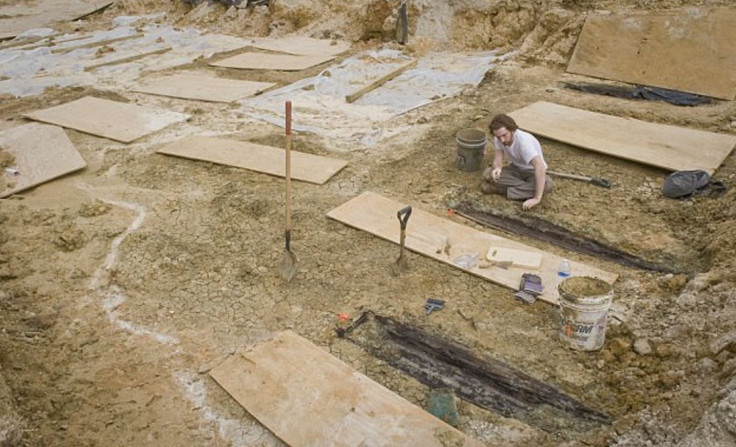7,000 bodies from Mississippi insane asylum could be buried on university campus
Researchers first began discovering unmarked graves in 2013 during the construction of a road.

Up to 7,000 bodies are believed to be buried on the University of Mississippi Medical Center (UMMC) campus, officials have said.
The unmarked graves belong to former patients of the state's first mental institution – known as the Insane Asylum – with underground radar showing coffins stretching across 20 acres, the Clarion-Ledger reported.
The asylum was built in 1855 and intended to improve conditions and treatment of the mentally ill, with many said to have been living chained up in closets or attics.
With the asylum's former grounds now home to UMMC, scores of bodies began being unearthed in 2013 during construction of a road on the campus.
When the university began work in 2014 on a parking lot east of the dental school, underground radar revealed a further 1,000 coffins. More radar work revealed more coffins, with the current estimate as high as 7,000.
The university now faces paying $3,000 (£2,300, €2,700) to exhume and rebury each body – resulting in an eye-watering total cost of up to $21m.
Officials are exploring a cheaper option of handling the exhumations in-house at a cost of $400,000 over eight years – something many UMMC academics feel would be well worth the cost given the insight they hope to gain into life of asylums in the 19th and 20th centuries.
They want to create a memorial to preserve the remains, along with a visitors centre and a lab that could be used to study the bodies.
Ralph Didlake, who oversees UMMC's Center for Bioethics and Medical Humanities, believes the lab would be the first of its kind in the nation.
"We have inherited these patients," Didlake said. "We want to show them care and respectful management."
He has joined other academics at the university in setting up the Asylum Hill Research Consortium.
The group includes Molly Zuckerman, associate professor in Mississippi state department of anthropology and Middle Eastern cultures.
He said: "It would be a unique resource for Mississippi. It would make Mississippi a national center on historical records relating to health in the pre-modern period, particularly those being institutionalised."
While the asylum improved conditions for patients with mental health problems, disease and other ailments remained a serious problem.
Of the 1,376 patients admitted between 1855 and 1877, more than one in five died, the Clarion-Ledger reported.
In 1935, the asylum was moved to the present-day location of State Hospital at Whitfield. Construction for UMMC began two decades later.
© Copyright IBTimes 2025. All rights reserved.





















